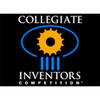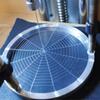Latest News
- Reel Hope for Ocean Conservation
- When we'll be able to 3D-print organs and who will be able to afford them
- Top collegiate inventors awarded 2021 Lemelson-MIT Student Prize
- Lewis Lab members have designed and made hundreds of face shields for frontline medical workers
- 3D-printed hearts with 'beating' tissue could ease organ donor shortage
- Vascular tree sculpture highlighted at Cooper Hewitt’s Wyss Institute Selects exhibit
Copyright © 2024 The President and Fellows of Harvard College | Accessibility | Digital Accessibility | Report Copyright Infringement







